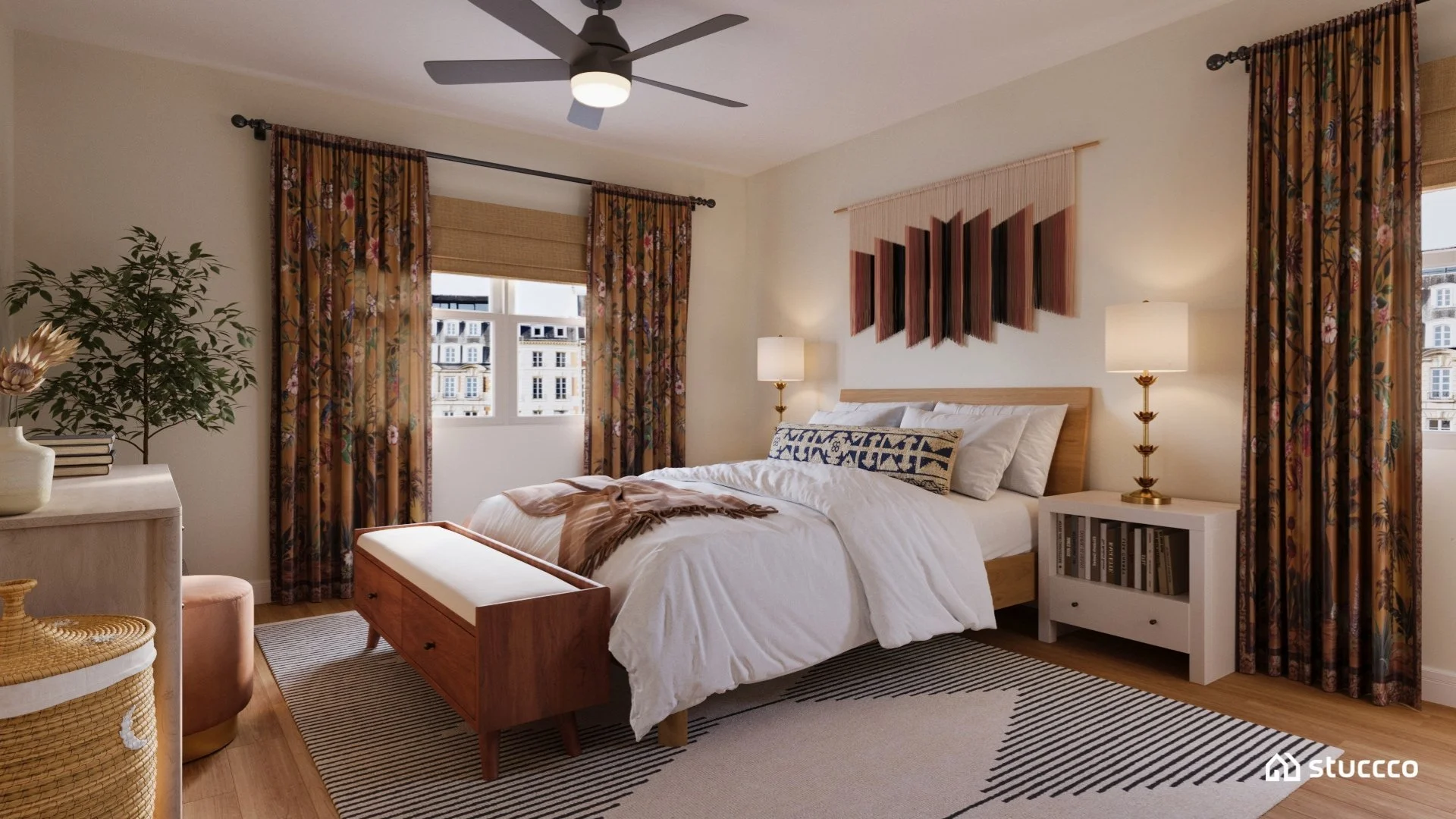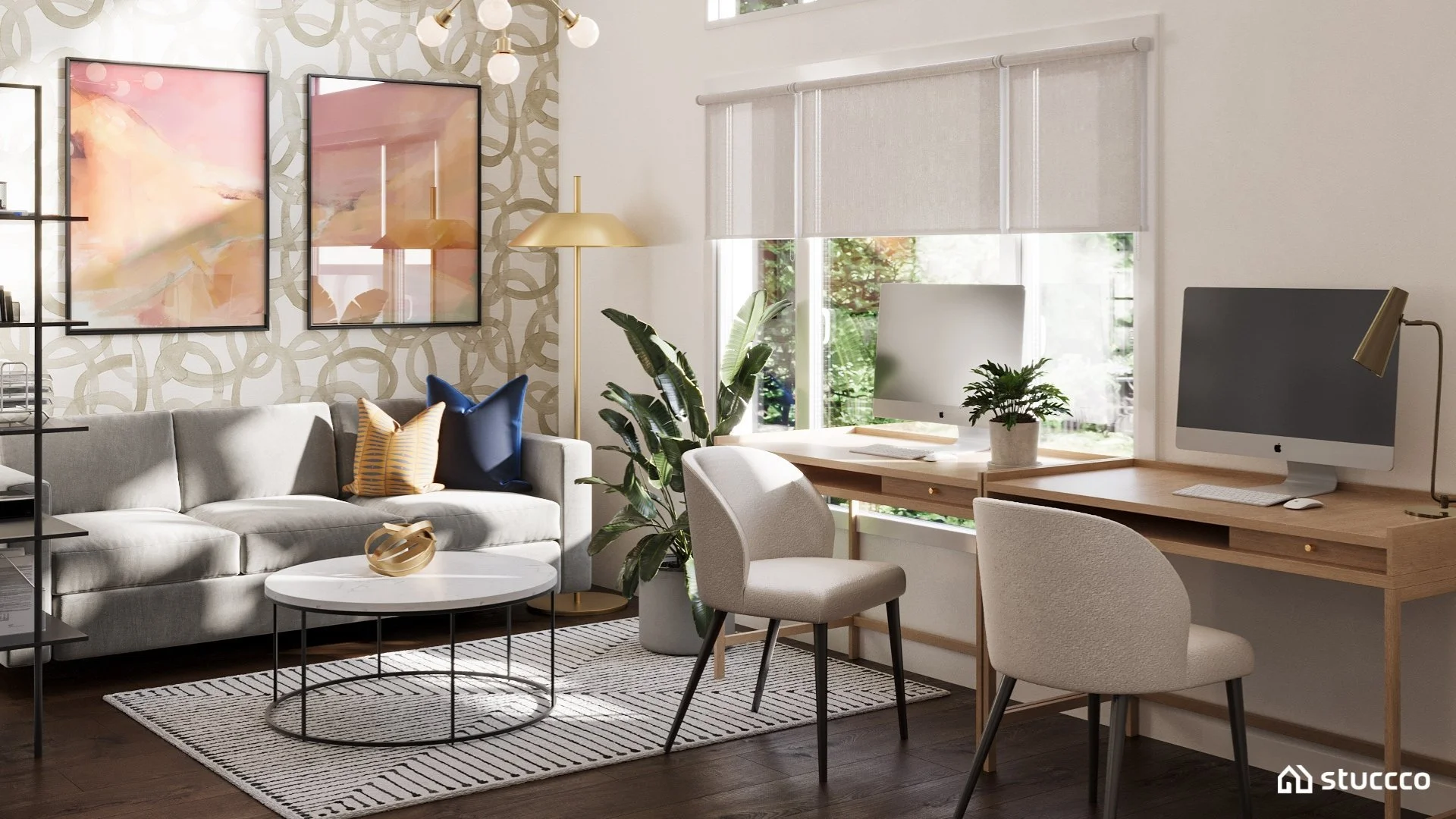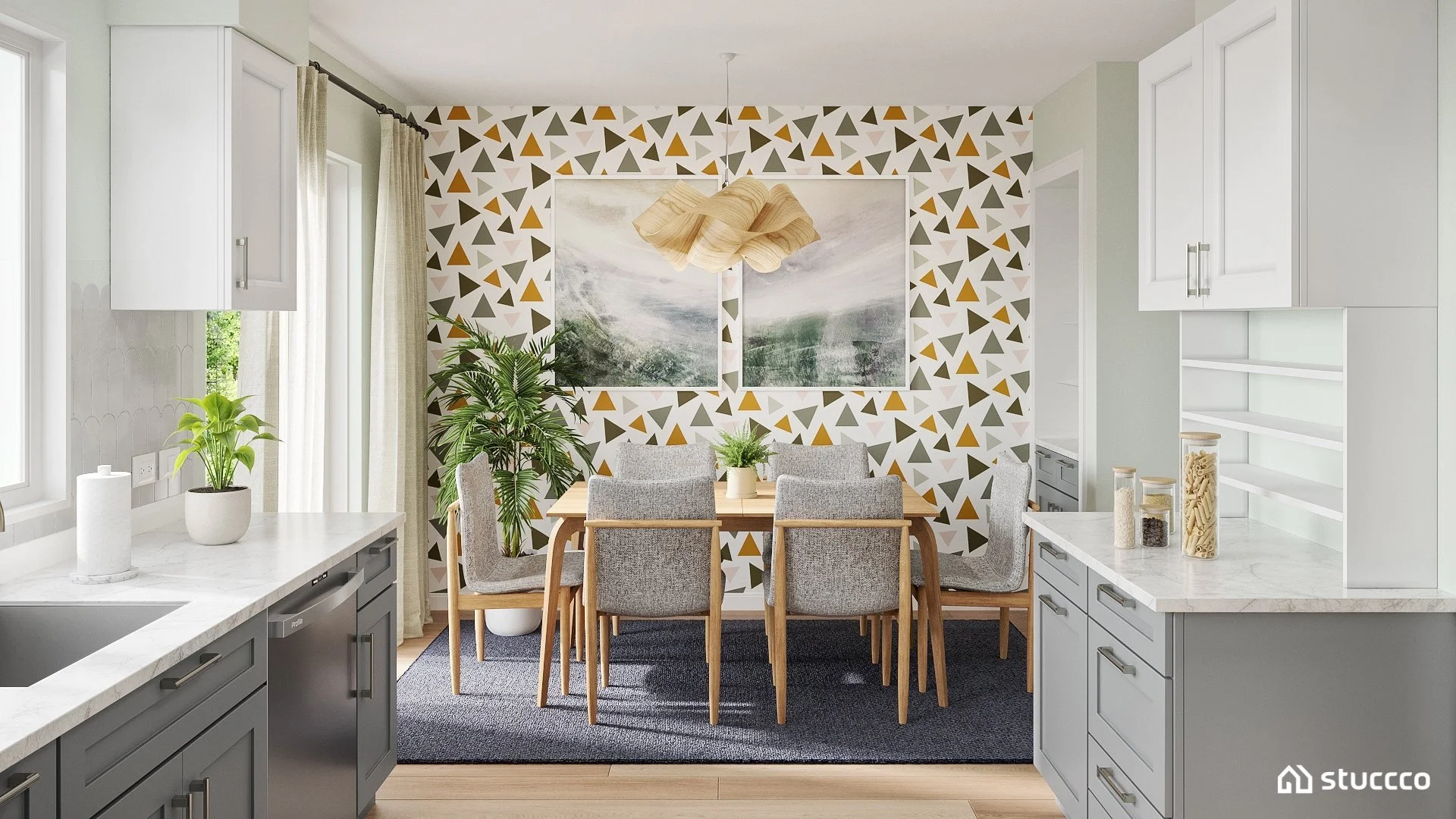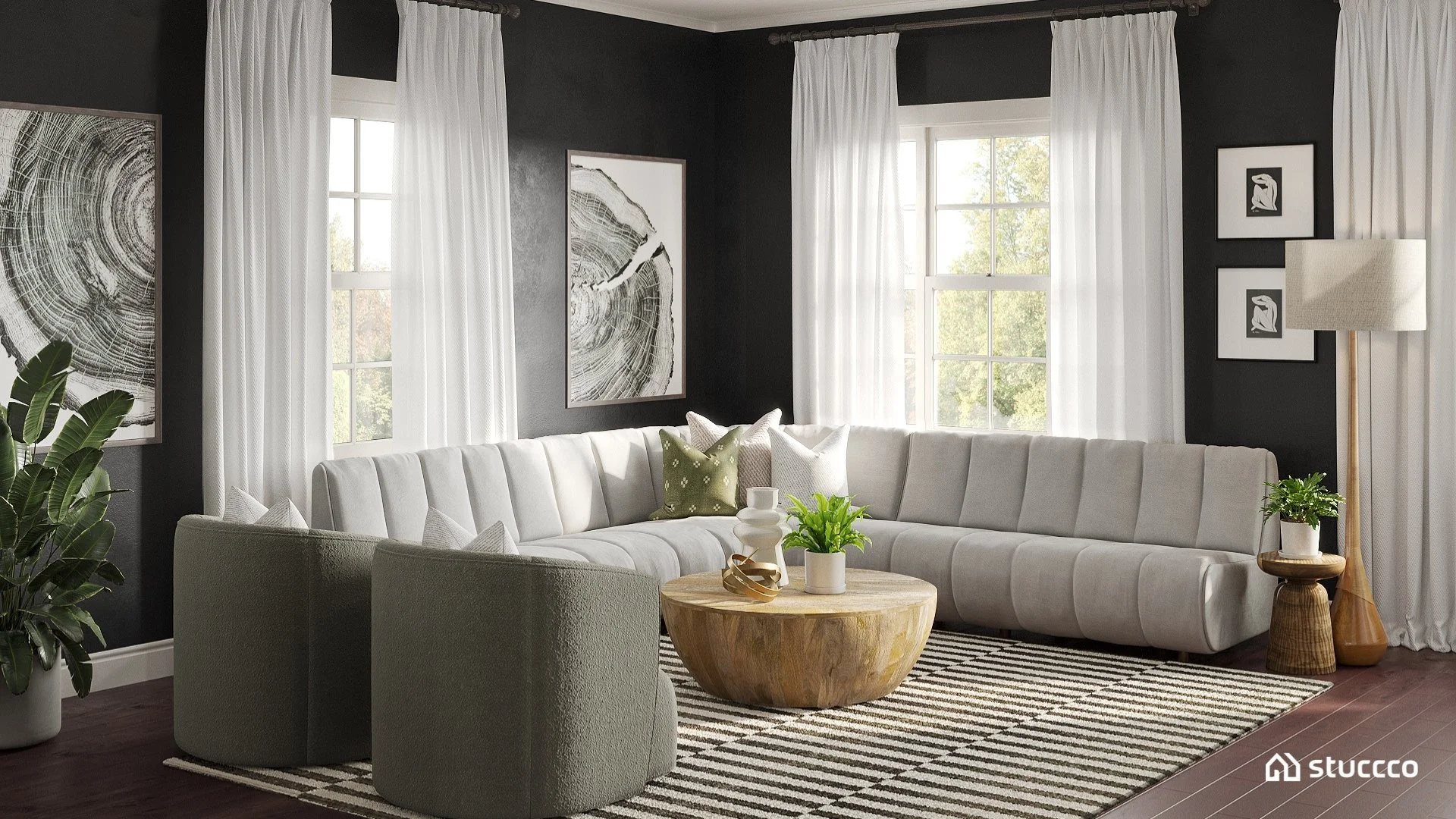Ask Joshua: How to Start Designing Your New Home—A Step-by-Step Guide for First-Time Buyers
Hi Joshua,
I recently bought my first home, and I’m so excited—but also completely overwhelmed! There are so many things I want to change and decorate, but I don’t know where to begin. Should I start with furniture, paint, or something else? How do you recommend approaching interior design for a brand-new (to me) house?
Jenn - Issaquah, Washington
Luxury modern organic-style open-concept living area designed by virtual interior designer Joshua Jones of JJones Design Co. The 3D renderings were created by Stuccco.
Congratulations on your new home! That’s such an exciting milestone—and yes, it’s completely normal to feel overwhelmed at first. When everything is a blank canvas, it can be hard to know where to begin. But the good news is, with a smart approach, designing your home doesn’t have to feel chaotic.
1. Pause Before You Purchase
It’s tempting to start buying furniture and decor right away, but I always encourage new homeowners to live in the space for a few weeks (if possible) before making major decisions. This helps you understand how natural light flows through the rooms, where you tend to spend time, and what the space truly needs.
An eclectic-style primary bedroom designed by virtual interior designer Joshua Jones of JJones Design Co. The 3D renderings were created by Stuccco.
2. Start with Function First
Before you dive into paint colors or furniture styles, think about how you need your home to function. Do you work from home? Do you host guests often? Do you need more storage than your previous space offered? Function is the foundation for great design.
A mid-century modern-style home office and guest room designed by virtual interior designer Joshua Jones of JJones Design Co. The 3D renderings were created by Stuccco.
3. Focus on One or Two Priority Spaces
Trying to design every room at once is a fast track to burnout and budget regret. Instead, choose the rooms that will have the biggest impact on your day-to-day life. For many people, that’s the living room and the primary bedroom—or a home office if you work remotely.
If you already have furniture from your previous home, that’s perfectly fine. Start by figuring out what still works for your lifestyle and what might need to be updated. It’s okay to reuse pieces you love or that are still functional. My advice? Focus on the rooms that feel unfinished, uncomfortable, or are just bugging you. Tackling those first can bring instant relief and help you gain momentum before moving on to the next space.
A Scandinavian-style kitchen and dining room designed by virtual interior designer Joshua Jones of JJones Design Co. The 3D renderings were created by Stuccco.
4. Create a Cohesive Vision
Once you know where to start, take time to figure out the overall look and feel you want your home to have. I suggest gathering inspiration images, identifying patterns in your preferences, and choosing a loose color palette to guide your decisions across rooms. If you’re feeling stuck, this is a great time to work with a designer who can help bring your ideas into focus.
A California Casual-style kitchen designed by virtual interior designer Joshua Jones of JJones Design Co.
5. Make a Design Plan (Even a Loose One)
A good design plan will help you prioritize your purchases, avoid costly mistakes, and stay on budget. It doesn’t need to be complicated—just a simple checklist of what’s needed in each room, what your timeline looks like, and how much you’re comfortable spending.
A modern organic-style living room designed by virtual interior designer Joshua Jones of JJones Design Co. The 3D renderings were created by Stuccco.
6. Don’t Forget the Details
Once your foundational pieces are in place, start layering in things like lighting, window treatments, rugs, and art to personalize the space. These finishing touches are what make a house truly feel like home.
An eclectic mountain lodge-style living room designed by virtual interior designer Joshua Jones of JJones Design Co. The 3D renderings were created by Stuccco.
Let’s Make It Feel Like Home
Designing your new home should be a joyful process—not a stressful one. If you’re feeling overwhelmed or unsure how to begin, I offer virtual design services that take the guesswork out of the process and help you feel confident in every decision. Whether you need help with a single room or want a plan for the whole house, I’d love to help make your space feel like you.
Have interior design related questions? You can ask Joshua here.









